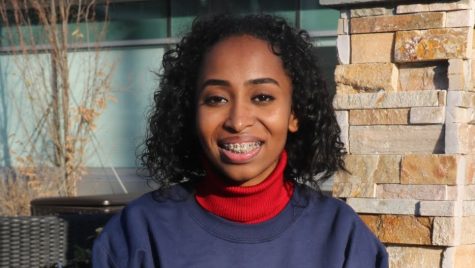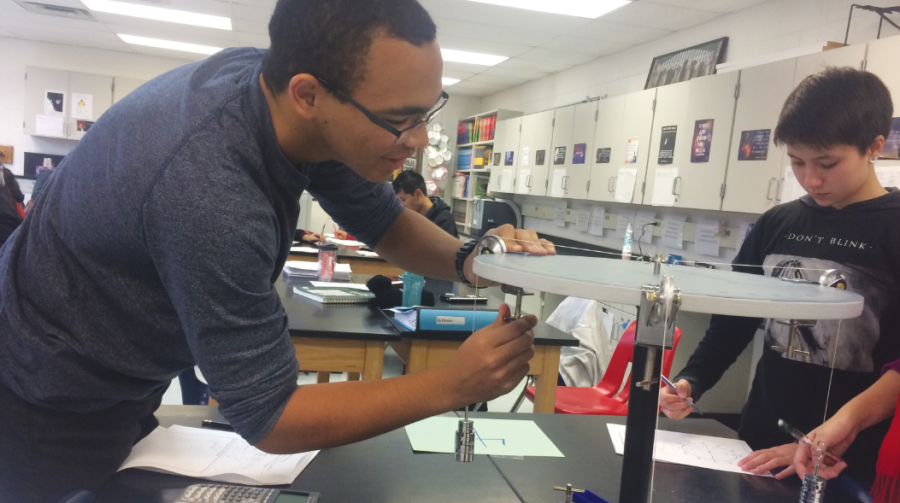Minorities needed in STEM
Junior Heaven Lemma has always dreamed of wearing her name-branded doctor’s coat and her own stethoscope since the third grade. She has always known that being a pediatrician was the career for her.
“I want to go into pediatrics because children are our future and their health is important,” Lemma said. “I also love working with kids.”
Since then, she has rigorously pursued the IB classes and extracurricular activities to further her pursuits including volunteering at INOVA hospital. She has done so to ensure her future in STEM.
Although Lemma has the recipe for success, as an African American girl in STEM, her story is not repeated very often.
Minorities are underrepresented in most fields, however, in the STEM field this divide is the most dramatic.
According to the National Center for Education statistics, African Americans make up over 13% of the U.S. population, but in 2011, they received less than 10% of STEM related Bachelor degrees, 5% of masters, and less than 5% of PHDs.
The demand for STEM students is high because STEM jobs are projected to increase significantly more than any other field in the coming years.
According to the Bureau of Labor Statistics, some STEM professions are expected to grow by 27% by 2022.
As the need for jobs increase, the supply of workers is going to be at risk as minorities continue to be underrepresented.
The need for more minority STEM professionals is important for the moral reasons in that everyone regardless of race, socioeconomic background or religion should have the right to pursue whatever dream that wish, but it is important for the scientific reasons also.
When in a diverse group with different background and ideas, it creates an atmosphere perfect for creativity and curiosity which can lead to more innovation.
Over 70% of the country’s scientists are white, which shows that we are drawing most of our scientific ideas from one group of people, which can be improved.
Gaps in STEM education and the workplace often begin in high school. According to National Center for Education Statistics, minority students often don’t have access to and often aren’t interested in STEM-related honors or higher level learning classes.
Schools need to focus on making sure minority students have more opportunities to get interested and involved in the workplace. Nationally, the problem is still quite clear. Nationally, minority students are significantly less likely to be interested in the STEM curriculum. Minority students often have perceptions that STEM is too hard.
“Going into the STEM field being a minority and a woman is a challenge because of he lack of representation,” Lemma said. “However, I want to be a person who breaks the boundaries and won’t let it discourage me.”
When representation is at a low, it is hard for minorities to try to go for a career where they have no role models.
However, Lemma’s situation is different, “Watching my mother go through years of nursing school gave me the motivation to aim high.”
One strategy for improving or increasing minorities in STEM is more mentorship and one on one work with minority students.
Programs like The White House’s Educate to Innovate encourage those who are at the middle for achievement in science and math and mentor students to move ahead.
In 2009, President Obama started this initiative with one of the goals set to bring in more minorities in STEM by creating more role models.
The initiative used different leading minorities in various fields and has them reach out to underrepresented students.
Additionally, the encouraging of extracurricular science programs like Lemma’s volunteer work at INOVA hospital allows students to get involved and interested in STEM.

Senior Aseal Saed is currently the Co-Editor in Chief of The A-Blast. This is her fourth year on staff. Her previous positions were as In-Depth Editor...






Misten Jones • Jan 21, 2017 at 4:53 am
Dear Sir/Madam,
Information given by your blog seems very nice and helpful. We are glad to inform you about the STEM scholarship program named as, “The AFCEA Educational Foundation Diversity Scholarships” which is available for the full-time graduate students (women and minority students) who are enrolled in their second semester and are studying major in STEM fields.
Scholarship Deadline: April 15, 2017
Applicants can get more information about the scholarship through the given link: http://usascholarships.com/afcea-educational-foundation-diversity-scholarships/
If you want to read articles related to scholarships like, how to apply for scholarship, how to get scholarship, Scholarship thank you letter etc. Then go through the given link: http://usascholarships.com/category/article/